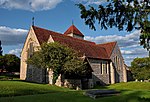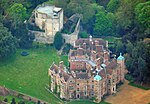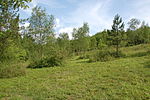Stour Valley Walk

The Stour Valley Walk is a recreational walking route that follows the River Stour, through the Low Weald and Kent Downs, from its source at Lenham to its estuary at Pegwell Bay. The walk passes through some of Kent's finest landscapes, most important nature sites and most historic, unspoilt villages. The walk is signed with the logo of a heron, a bird occasionally seen in the area. The 58 miles (93 km) route is of interest for its landscape and history, and for its archaeological, historical and architectural features. Part of the Pilgrims' Way followed the river valley from Wye to Canterbury after the North Downs. The walk passes through a varied landscape of downland, woodland, orchards, hop gardens and farmland; lakes, dykes and marshland; unspoilt villages and hamlets, and historic towns.It is possible to reach the walk from Maidstone via the 12 kilometre long Len Valley Walk.
Excerpt from the Wikipedia article Stour Valley Walk (License: CC BY-SA 3.0, Authors, Images).Stour Valley Walk
Geographical coordinates (GPS) Address Nearby Places Show on map
Geographical coordinates (GPS)
| Latitude | Longitude |
|---|---|
| N 51.211666666667 ° | E 0.97527777777778 ° |
Address
CT4 7ED
England, United Kingdom
Open on Google Maps










